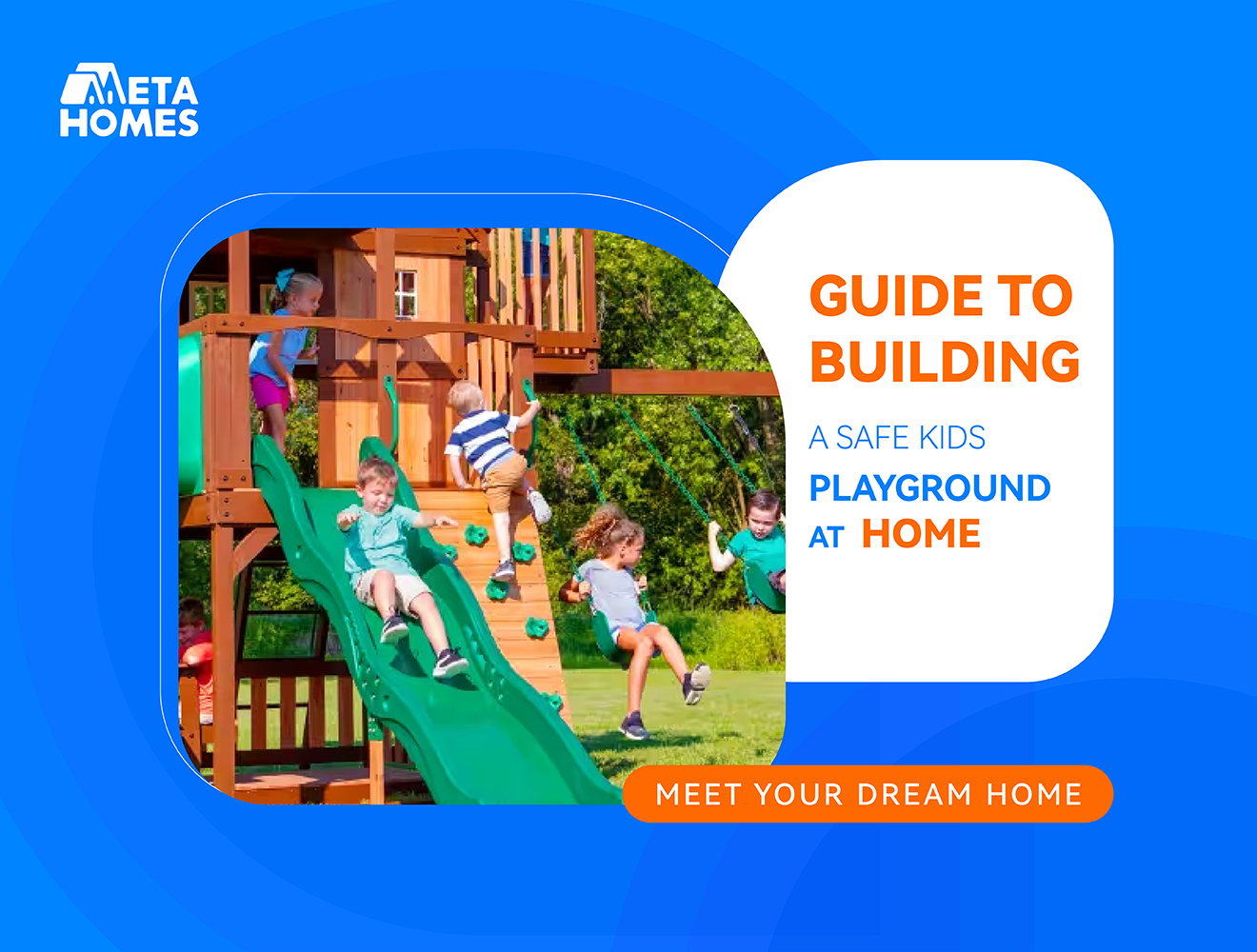
Every child deserves a safe and fun space to play, explore, and let their imagination run wild. Playgrounds are a part of childhood, they’re more than just physical activity – they’re social interaction, creativity, and cognitive development.
But as much fun as playgrounds are, safety always comes first, especially when creating a playground at home where you have full control of the environment.
A home playground can be a sanctuary for your child, a place where they can explore and play to their heart’s content without leaving the safety of your property.
But with that freedom comes the responsibility of making sure every aspect of the playground is safe and suitable for your child’s age and ability.
Whether you have a big backyard or a small one, designing a playground requires careful consideration of several factors including the equipment, materials, and layout of the area.
Creating a safe playground at home is not just about buying the right equipment – it’s about creating an environment that’s fun and safe, tailored to your child’s needs.
This requires thought, from assessing the space to choosing the right equipment and installing safety features like fencing and cushioned surfaces and regular maintenance, and teaching your child about safe play practices to minimize the risk of injury.
If you want to create a simple play area with a sandbox and swings or a more elaborate setup with climbing frames and slides, these tips will help you build a playground your child will love and you’ll feel happy about.
1. Assess Your Space
The first step in creating a safe playground at home is to assess space. Take a good look at your yard or designated play area and get to know its size, shape, and terrain. Consider:
-
Size: The size of the space will determine the type of equipment you can install. Big yards can fit swings, slides, and climbing frames, small spaces might be better suited for a sandbox or playhouse.
-
Terrain: What’s the ground surface like? Is it flat or sloped? Uneven terrain may need leveling before installation and some equipment may not be suitable for sloped areas.
-
Sunlight and Shade: How much sunlight does the area get throughout the day? You should provide some shaded areas where children can take a break from the sun.
2. Choose Age-Appropriate Equipment
When choosing equipment, consider your child’s age and developmental stage. Age-appropriate equipment means the playground is fun and safe.
-
Toddlers (1-3 years): For younger children, look for equipment with low platforms, short slides, and simple climbing frames. Avoid equipment that’s too tall or complex.
-
Preschoolers (3-5 years): Children in this age group love more adventurous play. Add small swings, slides, and interactive elements like steering wheels or telescopes.
-
School Age Children (5+ years): Older children want more challenging play. Larger climbing frames, monkey bars, and more advanced swings are suitable for this age group.
3. Safety Surfacing
Surfacing is one of the most important aspects of creating a safe playground. The ground beneath and around equipment must be cushioned to absorb the impact of falls, which are the most common cause of injury on playgrounds.
-
Grass and Dirt: Natural surfaces like grass and dirt may seem soft but don’t provide enough cushioning for falls. Over time they can become compacted and lose their ability to absorb impact.
-
Rubber Mulch: It’s made from recycled rubber and comes in a range of colors so you can add a pop of color to your play area. This acts as a shock absorber.
-
Wood Chips: Wood chips are another option. They’re affordable and effective at cushioning falls but need to be replenished regularly to maintain their effectiveness.
-
Rubber Mats and Tiles: For a more permanent solution consider installing rubber mats or tiles. They provide excellent impact absorption and are easy to clean but can be more expensive than other options.
4. Fencing
Fencing is an important part of a safe home playground, especially if you have younger children or live near a busy road. A good fence keeps children within the play area and prevents them from wandering off.
-
Height: The fence should be high enough to prevent children from climbing over it. The recommended height is normally four feet high.
-
Gates: Install childproof gates that can be securely latched. Consider self-closing gates so they always close behind you.
-
Visibility: Choose a fence design that allows you to see into the playground from outside the enclosure. This way you can keep an eye on your children while they play.
5. Inspect and Maintain Equipment Regularly
Even the safest equipment can be a risk if it’s not maintained properly. Regular inspections and maintenance are crucial to keeping your playground safe.
-
Check for Wear and Tear: Look for signs of wear and tear like rust, cracks, or splintered wood. Replace or repair damaged parts immediately.
-
Tighten Bolts and Screws: Over time bolts and screws can work loose due to regular use. Check and tighten them periodically to prevent accidents.
-
Clean Surfaces: This keeps the playground looking good and prevents dirt and grime from building up, which can cause slips and falls.
-
Inspect Surfacing: Check the surfacing for displacement or wear. Rake wood chips back into place, refill rubber mulch as needed, and make sure rubber mats or tiles are securely fastened.
6. Shade and Weather Protection
While outdoor play is great for children, prolonged sun exposure can be harmful. Providing shade is crucial to protect your kids from the sun’s UV rays.
-
Trees: Planting trees around the playground area is a natural way to provide shade. As they grow they will provide more coverage and a cooler play environment.
-
Shade Sails: Shade sails are a great and stylish way to provide shade. They come in various sizes and can be placed in specific areas of the playground.
-
Canopies and Pergolas: For a more permanent solution consider installing a canopy or pergola over part of the playground. These structures provide robust sun protection and can also shield from light rain.
7. Add Fun, Safe Accessories
Once the safety basics are covered, consider adding some fun accessories to make the play experience more enjoyable. These additions can make your playground more engaging while still being safe.
-
Sandbox: A sandbox is a playground classic that encourages creativity and imaginative play. Make sure it has a lid to keep out debris and animals when not in use.
-
Playhouse: A small playhouse can provide hours of fun. Opt for smooth edges and non-toxic materials.
-
Trampoline with Enclosure: If you’re going to add a trampoline make sure it comes with an enclosure to prevent falls. Always supervise trampoline play to minimize the risk of injury.
8. Plan for Growth
As your children grow, their playing needs will change. Plan your playground with future growth in mind so it can grow with your kids.
-
Modular Equipment: Invest in modular equipment that can be added to or modified as your children’s interests change.
-
Space for New Additions: Leave some open space in your playground design for future additions like a basketball hoop or a garden patch for older children.



Leave a Reply